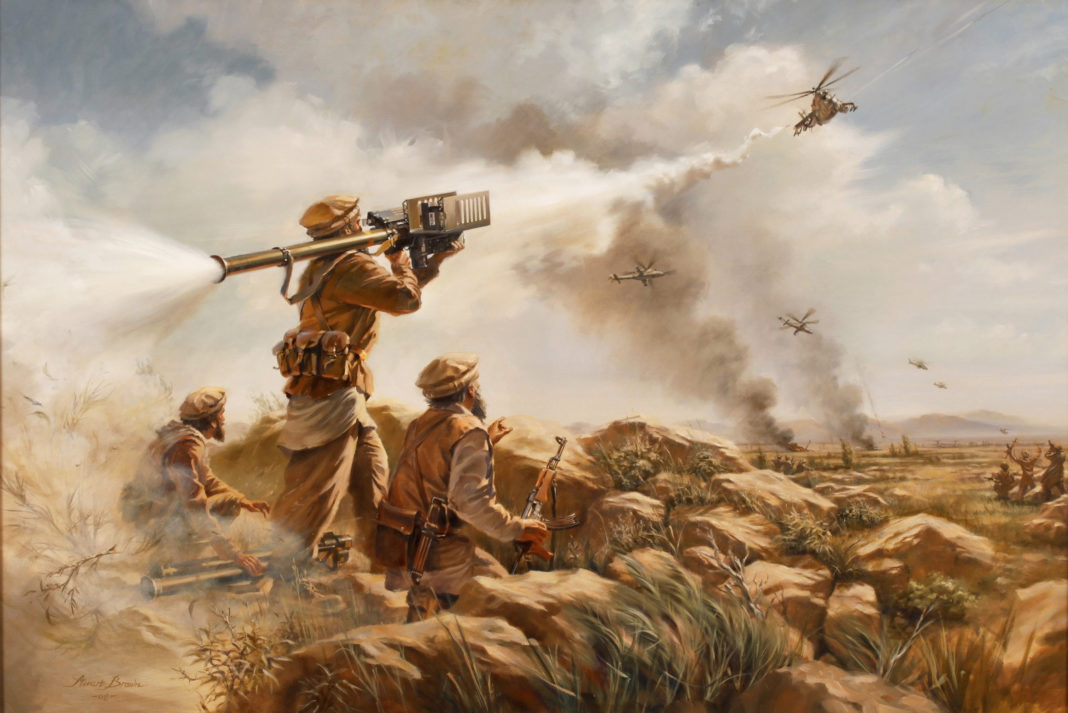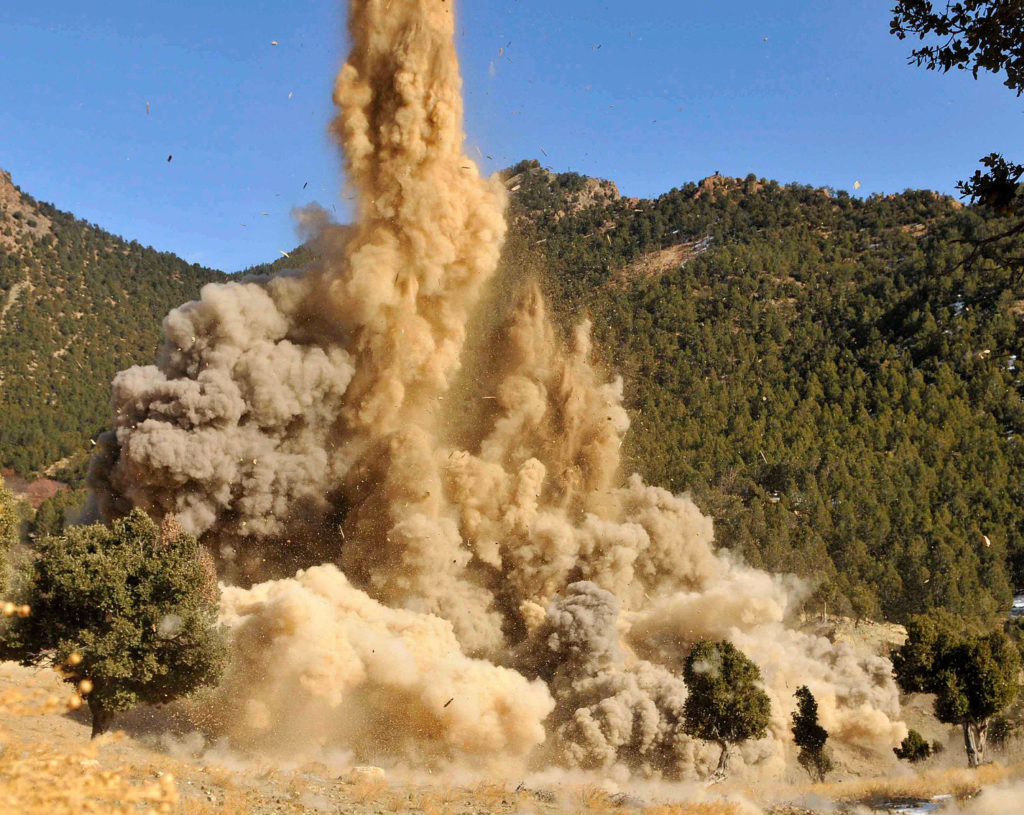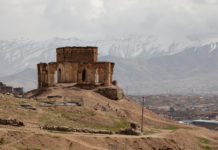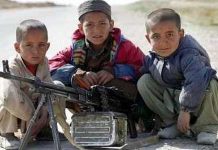When the US invaded Afghanistan in 2001, a narrative was quickly developed and sold to a generation that the Taliban were among the most oppressive regimes on the planet. This group, which sheltered Osama bin Ladin, also oppressed women, murdered minorities, and exercised religious fundamentalism to maintain their hold on power. Of course, all these things were true, but they are also true of American allies such as Pakistan and Saudi Arabia.
As the world watched the collapse of Afghanistan and the debacle of America’s flight from central Asia this month, it is worth revisiting the history of the Taliban. Who are they? Where did they come from? And what does history tell us about what the future may hold for Afghanistan?
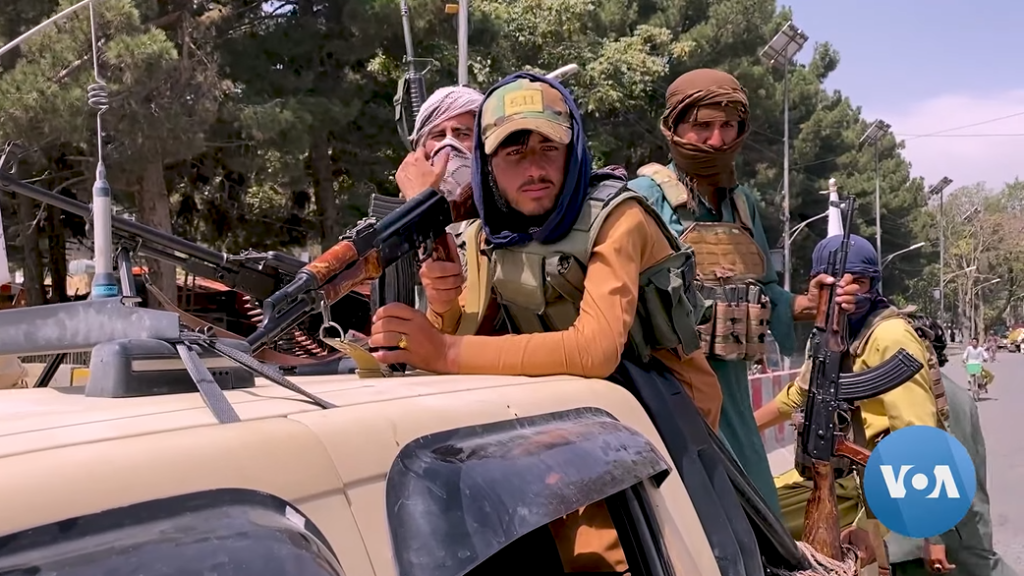
Afghanistan In Ruins
Many are familiar with the stories of Afghanistan’s mujahideen fight against the Soviet invasion in 1979. The United States and Saudi Arabia poured enormous amounts of money and military aid into Afghanistan throughout the 1980s in a deliberate effort to bog the Soviet military in Central Asia. The intent was for Afghanistan to become to the Soviet Union, what Vietnam had been for the United States in the decade prior.
-
- Readers might be interested in our podcast series on the History of American Foreign Policy in the Middle East
These were historical times for the cause of Islamic fundamentalism and jihad. Men like Osama bin Ladin and other future terrorists found a way to fuse violence and religious fundamentalism in the cause of jihad against the atheistic communists that sought to take over the Muslim nation of Afghanistan
Afghanistan drew fighters and martyrs from across the Muslim world who successfully pushed back the Soviets throughout the 1980s. The use of Islamic fundamentalism to draw fighters to Afghanistan’s cause was a deliberate and specific design by the US and Saudi Arabia – but this was not the origin of the Taliban as many believe today.
Origins of the Taliban
Following the Soviet retreat from Afghanistan in 1989, the laws of unintended consequences took over. While much of the world turned its attention to the collapse of communism in Europe and the Soviet Union, men who grew up in the mujahideen struggle for Afghanistan became warlords, and a civil war enveloped Afghanistan.
The major cities and countryside of Afghanistan became war zones where warlords and despots battled for control. Chaos reigned, and cities like Kabul fell under rocket attack from various directions on a near-daily basis. Local populations suffered constantly in this environment.
Afghanistan’s population suffered over a million deaths in the war years, and what remained of the family units were headed by impoverished widows.
Afghanistan had one of the highest infant mortality rates in the world at this time. After 15 years of fighting the Soviet Union, followed by civil war, most areas of the country lacked running water, electricity, and telephone. Twenty-five percent of children in Afghanistan died before they reached age five. Meanwhile, warlords forced fathers and sons to fight in the endless wars.
The Rise of the Taliban
It was in that context that the Taliban rose to power. The Taliban distinguished themselves as not merely another warring faction seeking to control Afghanistan but a religious order seeking to rid the nation of corruption and disorder. The Taliban profiled themselves as a sort of Robinhood, defender of the oppressed and suffering in Afghanistan.
The word Taliban translates to students or seekers of truth. Understanding the word is vital for noting the distinction of the Taliban compared to the other warring groups and organizations that filled Afghanistan in the era of the Taliban’s rise to power in the mid-1990s. Whereas the mujahideen warlords were corrupt and brutal, the Taliban were fighters for the oppressed with a code of Islamic justice. According to the Taliban, the suffering in Afghanistan was the result of corruption and departure from Islamic law.
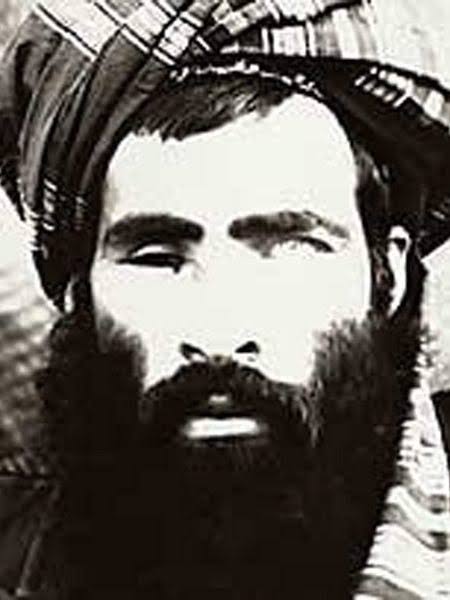
Pakistan’s intelligence services offered enormous assistance to the rise of the Taliban in aid, fighters, and equipment. Pakistan saw an alliance with a loyal ally in Afghanistan as central to Pakistan’s competition with India. The founder of the Taliban, Mohammed Omar, was Pakistani. In 1994, many analysts saw the Taliban as a proxy force for Pakistan within Afghanistan.
The Taliban made quick advances through Afghanistan beginning in 1994. Many Afghans welcomed the Taliban as a contrast to the mujahideen warlords who committed scores of war crimes and human rights atrocities in their quest for power.
In areas where the Taliban myth appeal failed, assassinations, threats, and persuasion followed. In many instances, Taliban religious preachers urged leaders of various regions of Afghanistan to surrender and be left alone or fight and face destruction.
In 1996 the Taliban took control of most of the country and declared Afghanistan an Islamic Emirate.
Life Under the Taliban
Although only Saudi Arabia, Pakistan, and the United Arab Emirates extended recognition to the Taliban government of Afghanistan, many citizens of Afghanistan welcomed the hardline rule of the Taliban as opposed to the chaos that disordered Afghan life in the years after the Soviet withdrawal. Additionally, the Taliban’s initial fight against corruption in the country won support from the public.
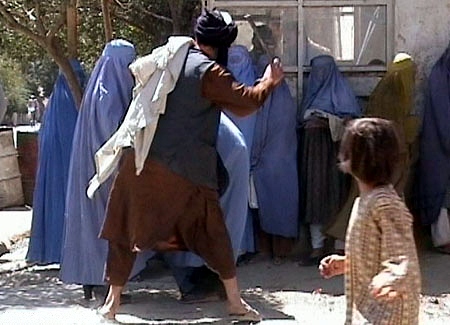
The Taliban were not a human rights group. They were a strictly Islamic group that believed in the rigid enforcement of sharia law. Upon taking control of the country, the Taliban arrested the last communist president of the country and hung him to death in the public square. The Taliban used hardline interpretations of Islamic law to punish criminals and control Afghanistan’s society. These laws included forbidding women from walking unescorted in public and being forced to cover themselves.
Life was not easy under the Taliban. Women were forbidden to work in public except in medical fields. Education for women was also outlawed. People found guilty of stealing faced amputation. Public beatings and jailing awaited anyone who violated the most minor of Taliban laws.
The Taliban enforced a rule of law on everything from music to television. Men were forced to attend the mosque and grow their beards to prescribed lengths. The Taliban used spectacle, including public stonings and beheadings, to enforce their rule over Afghanistan society.
In the northern part of the country, where resistance to the Taliban remained strong until the late 1990s, the new leaders of Afghanistan murdered thousands of Hazara boys and girls. Reports of genocide, ethnic cleansing, and sexual violence against minority ethnic groups became commonly associated with the Taliban by the end of the decade.
The Fall of the Taliban
The harsh reality of Taliban rule did not result in their decline or the involvement of foreign powers in Afghanistan. The cause that led to the American invasion of Afghanistan in 2001 was that the Taliban hosted Osama bin Ladin, leader of the al Qaeda terror group that carried out the attacks on the US on September 11, 2001.
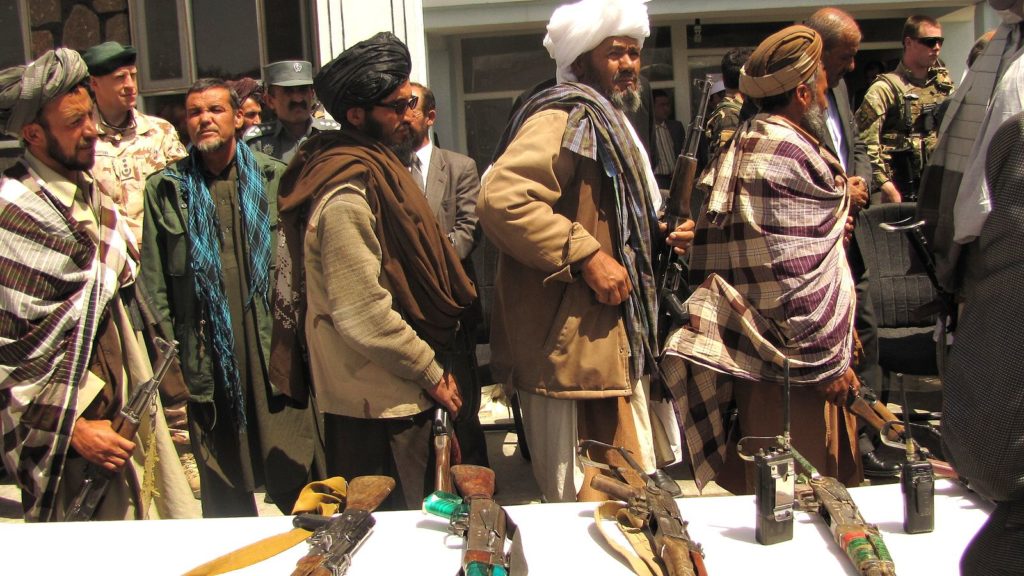
Within months after the US invasion, the Taliban government was toppled and replaced by a US-sponsored government. The Taliban regrouped as a guerilla group and insurgency fighters. For the next 20 years, the Taliban insurgency fought against the US. The Taliban of 2021 is essentially absent the fighters and leaders who lead the group’s first rise to power in 1996. The original generation of the Taliban is largely dead.
Resurrecting the Taliban
The US poured more than $2 trillion into Afghanistan over the next two decades. Most of this money poured into corrupt channels of the Afghan elite. Despite the billions of US dollars, Afghanistan’s infrastructure and economy remain in tatters.
While the US poured trillions of dollars and military aid into Afghanistan over twenty years, the Afghan government swelled again with corruption.
The fighting between US forces and the Taliban continued. ISIS soon joined as a third party to the fight. In the last twenty years, more than 40,000 civilians have been killed in a state of constant warfare. Afghan corruption and a state of constant warfare once again worked to return the Taliban to power.
Bipartisan Effort to Legitimize the Taliban
In 2011 the Obama administration initiated steps to begin peace negotiations with the Taliban. At that time, President Obama allowed the group to move representatives to Qatar to commence talks between the Taliban and the Afghan government.
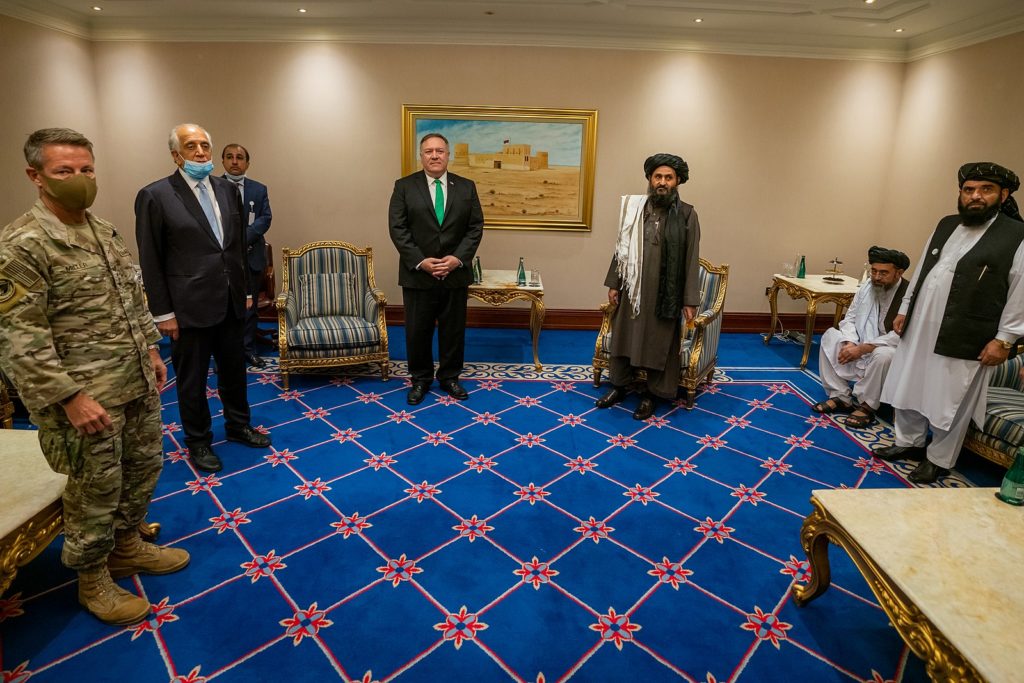
From left: Miller, Zalmay Khalilzad, ??, Pompeo, Abdul Ghani Baradar, Abdul Hakim Ishaqzai, Suhail Shaheen
In 2021 President Biden’s foreign policy toward Afghanistan was in lockstep with his predecessor Donald Trump. President Biden began aggressively withdrawing the US presence in the summer of 2021. In August, the Taliban initiated a shocking surge across the country, taking one provincial capital after another. In many instances, the Afghan military put up no resistance. On other occasions, the leaders of the Afghanistan provinces negotiated local agreements with the Taliban.
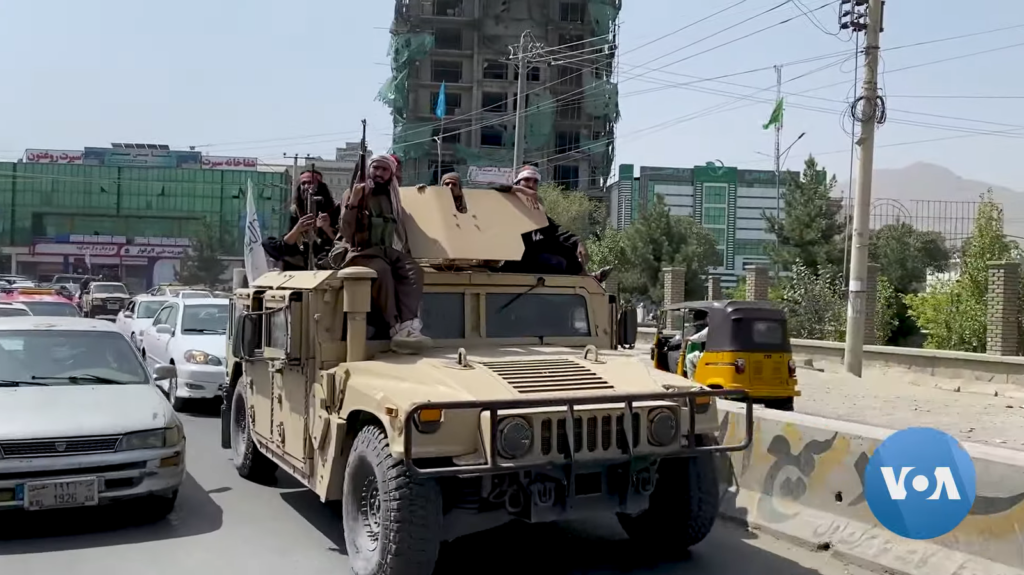
In what seemed like a matter of days, if not weeks, the Afghan government built upon corruption and US dollars, collapsed, and the Taliban were once again in control of the country.
The greatest friend to the Taliban is corruption and warfare. In the 1990s and 2021, these two realities helped the Taliban gain control of Afghanistan more than any other weapon of war.
Additional Reading
